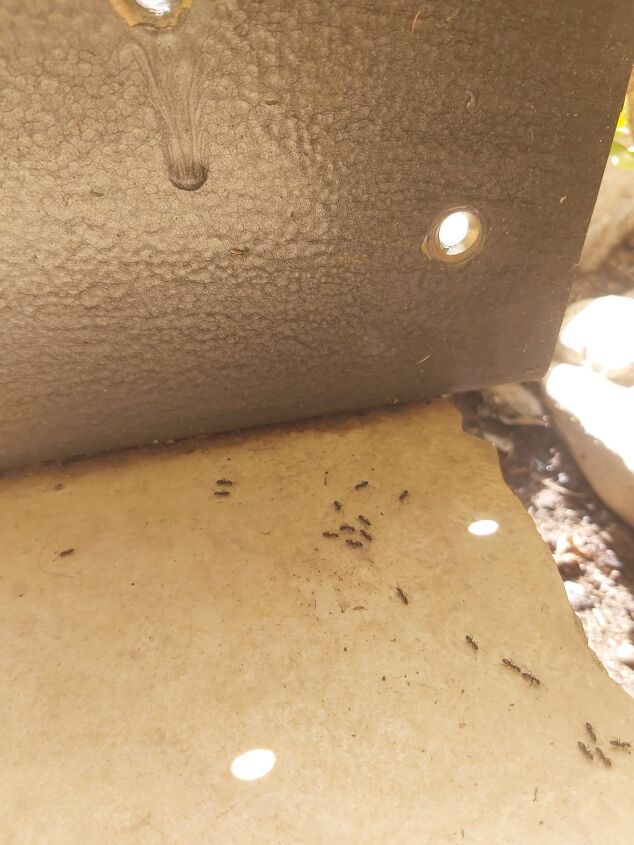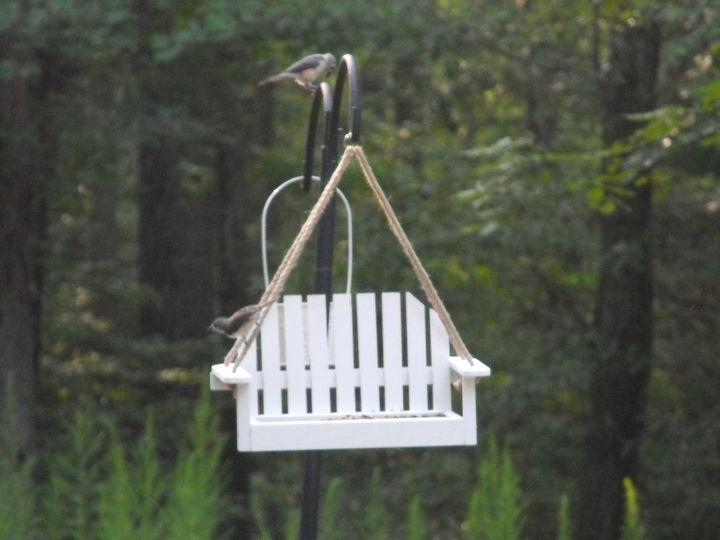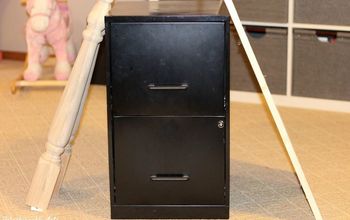Can someone recommend some dehumidifier solutions?

-
Running a dehumidifier will not do to much good if the structure is that leaky. All you will be doing is pulling more moisture through the walls. Insulation has nothing to do with stopping mold, humidity and bugs, In fact if incorrectly installed can add to this issue overall. What is needed is air sealing. You need to first find and caulk all openings around the outside of the house near where the siding meets the foundation. If those gaps are large, you can fill them with foam rods first then caulk over. For real large openings, using slow rise foam in a can fill them up. Not the yellow foam stuff, but the foam used for around windows and doors. Using the wrong foam can cause the siding to be pushed away from the wall area. I am a bit puzzled when you say mud comes in from around the baseboards. Is the floor level below the outside grade? If so that must be corrected to prevent rotting and additional decay. Can you describe the type of building you have? Basement, crawl or no access below? Foundation Brick, Stone, Cement, Block, or cannot see. Construction, Wood frame? Block, brick? Flooring inside. Wood or wood planks, How old is the structure? Depending upon its age, the mud can be coming from within the walls themselves. Real old buildings used mud mixed with straw for insulation. Perhaps this is the issue? If you can take any photos of the outside and perhaps the area in which your seeing the mud or where your seeing the insects, this will provide clues on how I can suggest you correct these issues.
 Woodbridge Environmental Tiptophouse.com
on May 31, 2012
Helpful Reply
Woodbridge Environmental Tiptophouse.com
on May 31, 2012
Helpful Reply -
-
Woodbridge Environmental: Thanks for replying. The front of the house is sinking into the ground and that is where I have the most issues. It is a rental and all I can afford so whatever I can do to fix it has to be cheap. The building is made of cinder blocks. The walls on the inside that are on outside walls are paneled and I don't know what is behind them. (I'm afraid to even think about it!) The other room that is a real issue is the bathroom. It is above ground level since it is in the back of the house but there is not a vent and the mold and mildew are a constant battle. I squeegee the shower after every use and put a fan on the sink next to the window to help dry it out. The landlord's maintenance man brought me a couple of gallons of Kilz mildew stain blocker but I haven't started painting yet. I'll take some pics from the outside next to the ground where the worst leaks seem to be and I'll post them.
 Dena H
on May 31, 2012
Dena H
on May 31, 2012
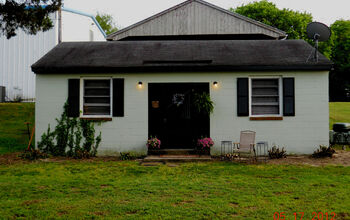 Helpful Reply
Helpful Reply -
-
This helps a lot. A block structure by its very nature tends to be cooler on the surface. This condition causes condensation on the cooler surfaces which is why your getting the mold build up an the bugs. My guess is that the mud your seeing and all the bugs are carpenter ants or termite swarms that are feeding behind the panel walls. Mud cannot be coming in through the block walls unless there is a large hole somewhere that you cannot see. To control the mold, You need to control the moisture in the home. If you have a window in the bath, use it every time you shower. Ideally a fan installed that goes though the wall or up into the attic and outside is best. But you will still get mold growing on the surface of the new paint in short order if you do not lower the humidity levels in the room. This also causes issues in the rest of the home. Additional humidity like you know attracts insects regardless of the wood eating type or not. If you have a window AC system or central cooling system, it should run as much as it can. hopefully its undersized so it drys out the rooms. Installing a dehumidifier in the house would be suggested. If the house was a wooden structure, then not so much. But because of the very nature of the material used, there is little water entry through the walls as there would be with wood framing. Get the landlord to check for termites and other insects. My guess is that is what is causing this issue with the mud coming in around the baseboard areas. But take the other photos as this may offer some other suggestions. To check for termites yourself, Use a screw driver and push it against the baseboard areas where you see the mud entering. You may dent the wood slightly but if it crushes or splinters real easy and appears to be easily damaged. Then my friend you have them. Try this in a few areas near the floor. You will know for sure in short order.
 Woodbridge Environmental Tiptophouse.com
on May 31, 2012
Helpful Reply
Woodbridge Environmental Tiptophouse.com
on May 31, 2012
Helpful Reply -
-
I can't get more than one photo at a time to upload. Sorry.
 Dena H
on May 31, 2012
Dena H
on May 31, 2012
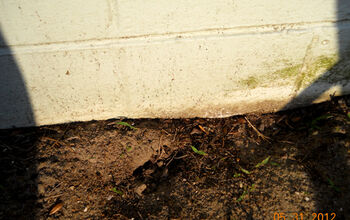 Helpful Reply
Helpful Reply -
-
Outside foundation
 Dena H
on May 31, 2012
Dena H
on May 31, 2012

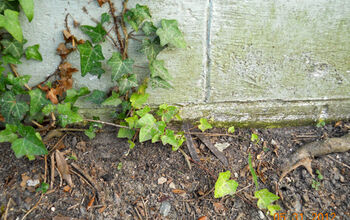
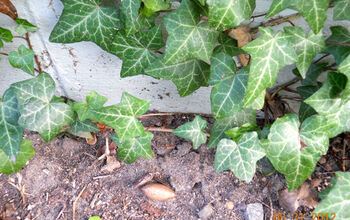 Helpful Reply
Helpful Reply -
-
The Termite Test... When I first moved in the ants were so bad that I had to put down those black ant hotels every 2 feet. I don't see many ants anymore but there are tons of other ugly bugs.
 Dena H
on May 31, 2012
Dena H
on May 31, 2012
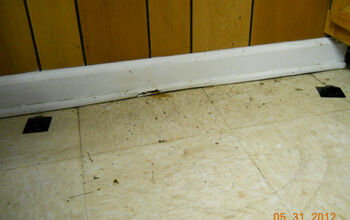 Helpful Reply
Helpful Reply -
-
I noticed that the bottom board was split a bit. Did that happen when you pushed on the trim with the screw driver? If so there is an issue. The ants that you speak about. Are they pretty large, or real tiny ones? It looks as though moisture is getting behind the paneling from humidity within the home. Insects do not drink water, they absorb it. If moisture is trapped behind the paneling then its harboring them. The only solution to this is to dry the area out and remove the damaged materials, treat and rebuild. If your a renter, your landlord should at least have the rooms treated. Those ant traps help very little, you need something a bit more aggressive. Another suggestion is to remove the ivy from the walls on the outside. Which I think you said you were doing. The rooting structure of some varieties of ivy will go right through the block walls. Once it drys out and decays this leaves an opening for bugs and ants to enter. A dehumidifier will help you a lot. Bigger the better, AC works as one so cooling the house down with window units will also help. Controlling indoor humidity as I said before in bath is important, but remember cooking and cleaning adds a lot of humidity in the air that you normally would not think about. But being in a block structure, it tends to condense instead of moving out of the building. Ideally should you decide to improve the rooms by tearing the panel down and replacing with wall board, you need to glue tightly closed cell foam boards at least two inches thick then fasten nail boards over that, then nail your finish wall system to that. You need to create a vapor break. Much like you would do in a basement project. In effect your home is like a basement, other then the walls are not leaking in, but preventing water from leaking out.
 Woodbridge Environmental Tiptophouse.com
on Jun 01, 2012
Helpful Reply
Woodbridge Environmental Tiptophouse.com
on Jun 01, 2012
Helpful Reply -
-
Yes, the place I pushed with the screwdriver just crumpled into dust and, yes, the ants are very, very tiny. I am digging up all the ivy as well as the roots from the shrubs I cut down. The roots from the shrubs are going under the house in the front so I am worried that they (as well as the ivy) have damaged the blocks. The yard had not been kept in years and everything was so overgrown that it had to come out. I'm not sure what the electric is going to run in this place since I have only been here a month and haven't received my first bill but I am concerned that running the a/c and then adding a dehumidifier will make the electric unaffordable. What dehumidifier do you recommend? I've checked online and there are just so many that I don't know which to purchase. I don't want to spend money on one that isn't effective but funds are limited as well. I will call the maintenance man first thing Monday morning and tell him about the termites and the situation with the paneling. I'm not sure what he'll do but it's worth a shot. When I first moved in neither the washer nor the dryer worked properly. Instead of fixing them, they replaced them. That was great but they left me a letter stating that my rent was going up $100 a month. I hate to see what it goes up to if they have to treat the place for termites and repair termite damage! eeeek! Thanks for all your help. Please let me know about a dehumidifier. Sure wish you were my landlord!
 Dena H
on Jun 01, 2012
Helpful Reply
Dena H
on Jun 01, 2012
Helpful Reply -
-
In the world of dehumidifiers the bigger the better as they pull more moisture out when they run. It can be placed in your laundry area and mounted on a shelf above any sink that may be present or above the drain line. A small garden hose can be fixed to the unit so it will drain as the water collects. Others have a collection pan that you must remove and dump pretty much every day depending upon the moisture in the home. If your running an ac system you can turn off the unit as they will be both doing the same thing. All the Dehumidifier is, is a AC system that reheats the cold air before it blows out again. While the AC cools the air and pushes the heat outside. So when shopping choose the most efficient energy star unit you can afford, along with the biggest. No brand is in my opinion better then another regarding these units. Perhaps a sears unit as they have good warranties and service. Steer clear if you can from the big box store types as they offer no service on the stuff that they sell. Your better off going to a specialty store that has a service department in case something goes wrong, which I doubt it ever really will. They should not be charging you more for rent because they had to replace something that did not work when they said it would. And they should not charge you anything more if they have to treat for the insects. Sounds like landlord is a bum. If your getting ants, I doubt the termite if indeed you have them were present. Quite often once the termites take the food substance out of wood, they abandon it and move elsewhere. Ants pretty much take over from there. Normally you will not see both in the same area as they tend not to play well together.
 Woodbridge Environmental Tiptophouse.com
on Jun 01, 2012
Helpful Reply
Woodbridge Environmental Tiptophouse.com
on Jun 01, 2012
Helpful Reply -
-
My 'laundry' area consists of a closet with a stacking washer/dryer. There isn't a sink or any drain other than the hose coming out of the washer that I can see. I will check with Sears to see what they have to offer in dehumidifiers. In the mean time, I will just have to bite the bullet and turn on the a/c. The humidity in the house is so bad today that all the floors are wet. The landlord is not a bad egg. He's a 'good ole boy' with a lot of low income properties. My place is less than what I could rent a room for and there isn't a lease, security deposit, or anything like that. Beggars can't be choosers as my grandmother always said. :-) Thank you for all your help. You have been a blessing! Dena M. Henderson
 Dena H
on Jun 01, 2012
Helpful Reply
Dena H
on Jun 01, 2012
Helpful Reply -
-
I am still concerned about all that humidity. What type of heat is in the house? Do you have a chimney and gas heat by chance? All that humidity can be caused by a plugged flue pipe not allowing all the flue gasses to escape up the chimney. So please check that including your hot water heater if it to is gas supplied. Also check your dryer vent carefully. Regardless of it being gas or electrical, if the dryer is not properly vented to the outside that also can be the cause of your heavy humidity within the home. An incorrectly vented dryer can dump as much as two gallons of water into the air with just one load. Even the slightest crack in the vent pipe can cause this issue.
 Woodbridge Environmental Tiptophouse.com
on Jun 02, 2012
Helpful Reply
Woodbridge Environmental Tiptophouse.com
on Jun 02, 2012
Helpful Reply -
-
No gas or chimney. I haven't used the heat yet but heat pumps are the standard around here. I haven't looked up in the attic yet but I plan to do that tomorrow. I want to size up the a/c unit up there and check on the drainage. There appears to be some significant water damage to the ceiling from the past and I want to make sure that it's fixed. I will check the dryer vent and let you know what I discover.
 Dena H
on Jun 02, 2012
Helpful Reply
Dena H
on Jun 02, 2012
Helpful Reply -
Related Discussions
Creative uses for empty cat litter buckets, anyone?
Does anyone have any ideas of things to do with empty cat litter plastic buckets? I did take a foam square and covered the bucket and foam with fabric to make a quick... See more
How do you use washi tape?
Looking for ideas on how to use washi tape for DIY projects and crafts.Do you use it on notebooks, gift wrap, and journal pages?How about decor pieces and organizing ... See more
Is washi tape recyclable?
I'm moving to a new place and taking down my renter-friendly washi tape decor when I thought... wait, isn't this just paper? Can I chuck the washi paper in the recycl... See more
Can you write on washi tape?
I have some gorgeous translucent washi tape and I want to use it to label items. Has anybody written on washi tape before? If so, what type of pen/ink works best to s... See more
How effective are bay leaves for ants?
I'm dealing with a terrible ant infestation, and I heard that bay leaves can be a great way to keep them away. Do you know if that's true? If it is, how can I use bay... See more
Does anyone have any good suggestions on how to keep squirrels out of my bird feeders?
I have tried the crushed red pepper in the bird seed, and have tried putting vaseline on the pole that holds the feeders....any other suggestions? I will at times hav... See more
How to clean a mirror without streaks?
Every time I clean my mirrors, they end up having tons of streaks and almost look worse than before I started. What could I use to clean them that won't leave streaks... See more

